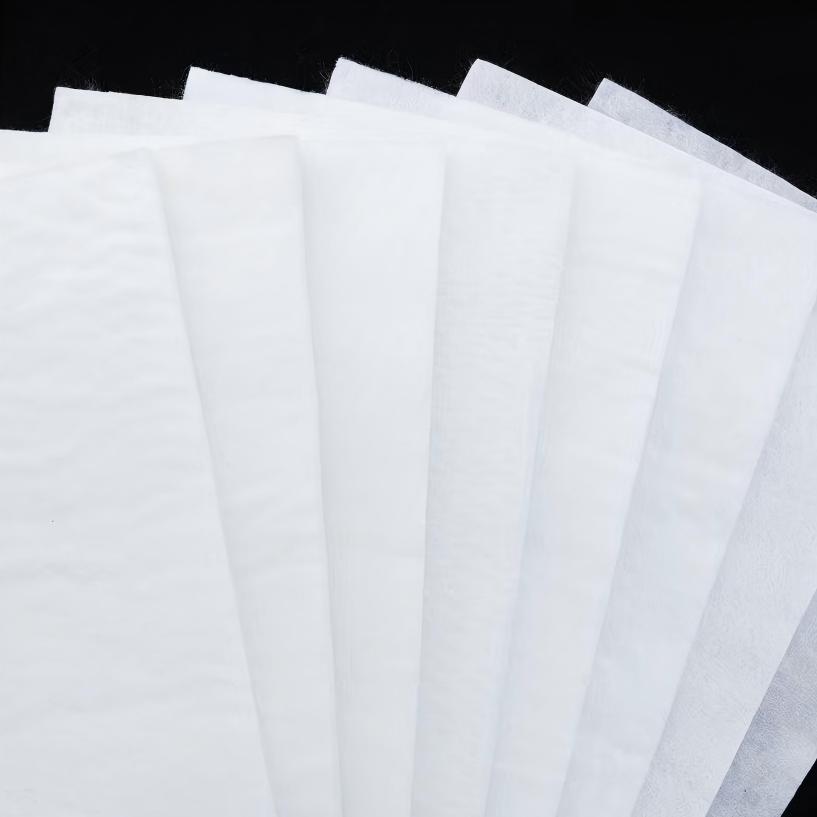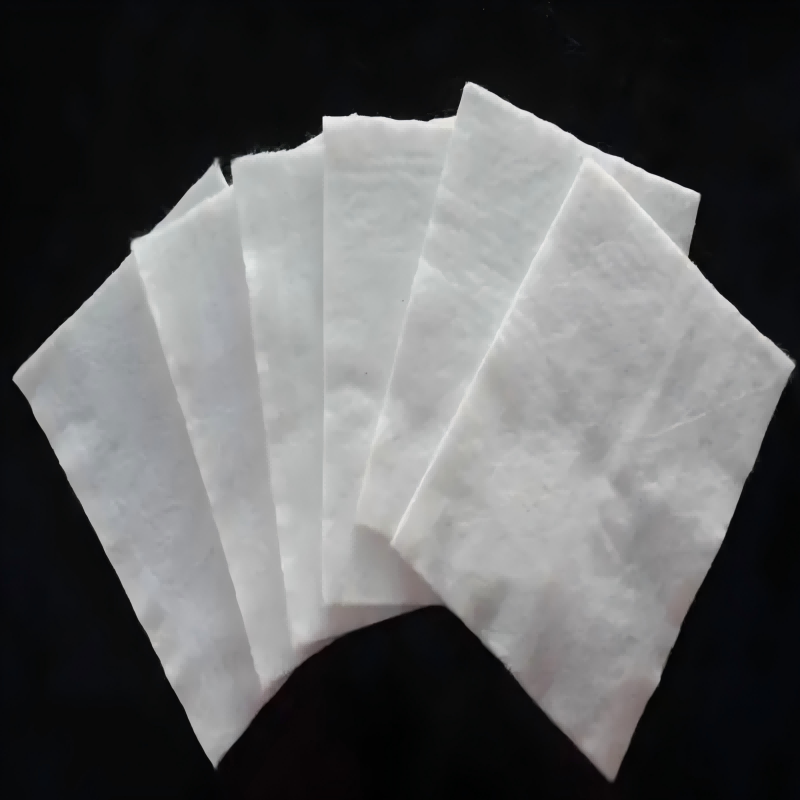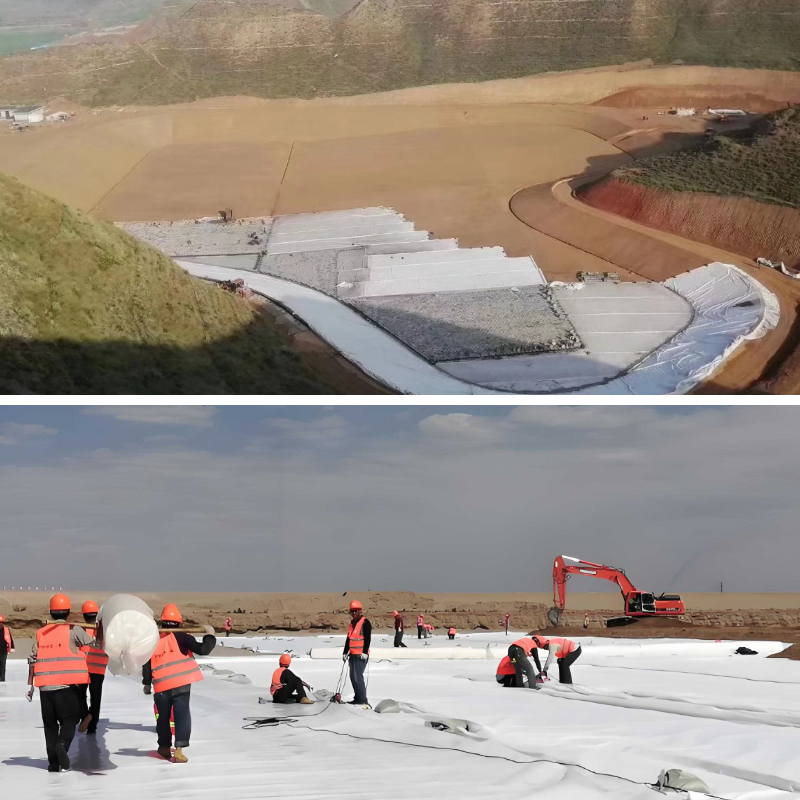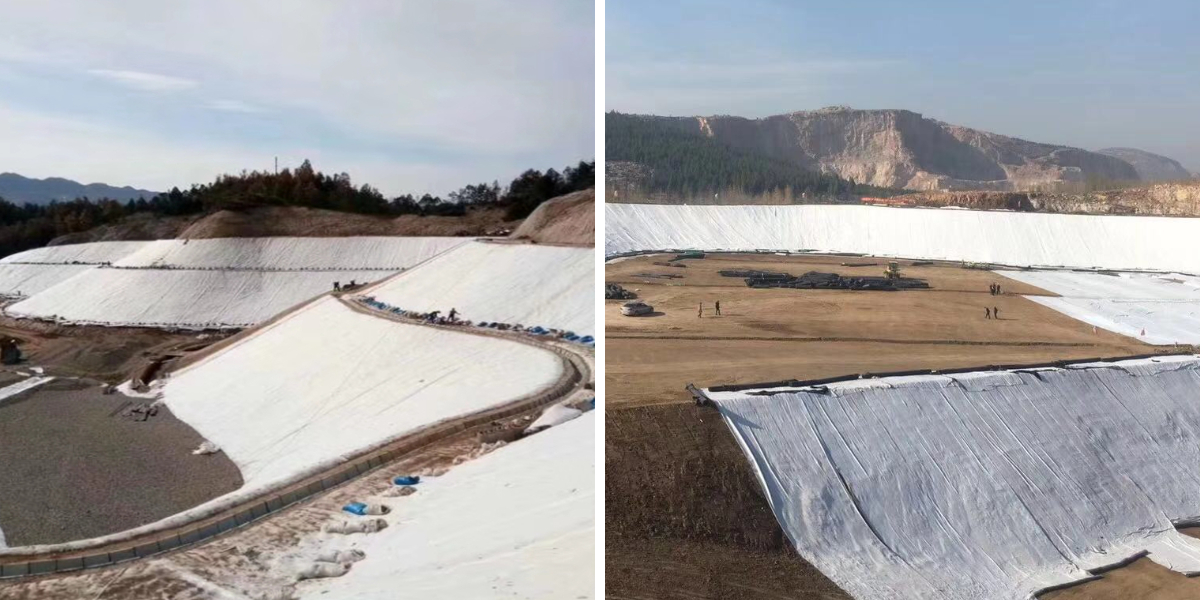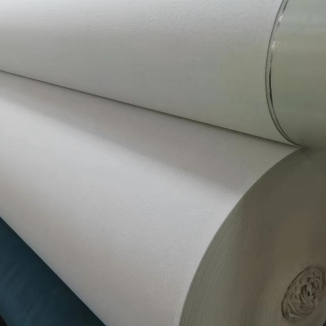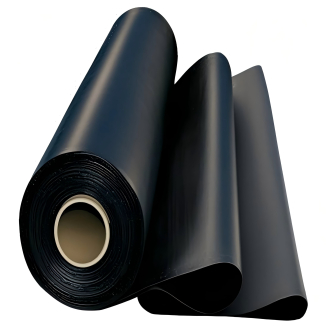Textile Geotextile
1. High strength and good mechanical properties
It can effectively disperse loads, withstand stresses during construction and use, prevent soil deformation, and serve as reinforcement.
2. Excellent permeability and filtration properties
In the drainage system, it can ensure smooth water flow and prevent surrounding fine soil particles from being carried away by the water flow, playing a perfect filtering role
3. Durability and resistance to chemical corrosion
It can maintain stable performance for a long time in harsh soil and groundwater environments, and its service life is much longer than natural materials.
4. Good isolation performance
Prevent the mixing of different materials, maintain the integrity and functionality of each layer of materials, thereby improving the load-bearing capacity of the structure.
Product Introduction:
Textile Geotextile refers to a flat structural material with water permeability made from high molecular weight polymers through non-woven processes (such as needle punching, water punching) or weaving processes (such as machine weaving, weaving). It achieves engineering functions such as reinforcement, isolation, filtration, drainage, and protection by interacting with media such as soil, rock, and water.
Main features and advantages
The advantages and characteristics of geotextiles are closely related, which is the fundamental reason why they can be widely used in the field of engineering.
1. High strength and good mechanical properties
It has high tensile, tear, burst, and puncture resistance.
2. Excellent permeability and filtration properties
There are numerous pores between the fibers, allowing water to pass smoothly while effectively preventing excessive loss of soil particles.
3. Durability and resistance to chemical corrosion
Made of chemically synthesized fibers, resistant to acid, alkali, insect infestation, and mold erosion.
4. Good isolation performance
Laying between soil layers or materials of different properties, forming a physical barrier.
5. Protective performance
Characteristics: It has a certain degree of elasticity and buffering ability.
Advantages: It can disperse stress, reduce the impact and damage of external forces on waterproof layers (such as geomembranes) or soft foundations, and provide soft protection.
6. Easy construction and high comprehensive benefits
Features: Light weight, roll packaging, easy transportation, simple and fast laying and construction.
Advantages: It significantly reduces the amount of soil excavation, sand and gravel transportation, saves labor, shortens the construction period, reduces project costs, and has significant environmental benefits (reducing the exploitation of natural sand and gravel materials).
Main categories
According to different manufacturing processes and structures, geotextiles are mainly divided into the following categories:
1. Non woven geotextile (non-woven geotextile)
Manufacturing process: It is mainly composed of short fibers or long fibers arranged randomly through methods such as needle punching or thermal bonding.
Features: Similar in appearance to felt, isotropic (with similar performance in all directions), high porosity, excellent permeability and filtration, mainly used for filtration, drainage, isolation, and protection.
Application: It is currently the most widely used type.
2. Woven geotextile (woven geotextile)
Manufacturing process: Woven from fiber filaments or flat strips in a certain direction, similar to the process of weaving bags.
Features: High longitudinal and latitudinal strength, high tensile modulus, uniform pores, but slightly poor filtration. Mainly used for reinforcement, strengthening, and isolation, especially in situations where high strength is required.
Application: Reinforced soil retaining walls, soft soil foundation treatment, etc.
Manufacturing process: Made using the process of mutual threading of coils.
Features: It combines some characteristics of non-woven and woven, but has relatively few applications.
Product Parameters:
project | metric | ||||||||||
Nominal strength/(kN/m) | |||||||||||
6 | 9 | 12 | 18 | 24 | 30 | 36 | 48 | 54 | |||
1 | Longitudinal and transverse tensile strength / (kN/m) ≥ | 6 | 9 | 12 | 18 | 24 | 30 | 36 | 48 | 54 | |
2 | Maximum elongation at maximum load in longitudinal and transverse directions/% | 30~80 | |||||||||
3 | CBR top penetration strength /kN ≥ | 0.9 | 1.6 | 1.9 | 2.9 | 3.9 | 5.3 | 6.4 | 7.9 | 8.5 | |
4 | Longitudinal and transverse tearing strength /kN | 0.15 | 0.22 | 0.29 | 0.43 | 0.57 | 0.71 | 0.83 | 1.1 | 1.25 | |
5 | Equivalent aperture O.90(O95)/mm | 0.05~0.30 | |||||||||
6 | Vertical permeability coefficient/(cm/s) | K× (10-¹~10-), where K=1.0~9.9 | |||||||||
7 | Width deviation rate /% ≥ | -0.5 | |||||||||
8 | Unit area mass deviation rate /% ≥ | -5 | |||||||||
9 | Thickness deviation rate /% ≥ | -10 | |||||||||
10 | Thickness coefficient of variation (CV)/% ≤ | 10 | |||||||||
11 | Dynamic perforation | Puncture hole diameter/mm ≤ | 37 | 33 | 27 | 20 | 17 | 14 | 11 | 9 | 7 |
12 | Longitudinal and transverse fracture strength (grab method)/kN ≥ | 0.3 | 0.5 | 0.7 | 1.1 | 1.4 | 1.9 | 2.4 | 3 | 3.5 | |
13 | Ultraviolet resistance (Xenon arc lamp method) | Longitudinal and transverse strength retention rate% ≥ | 70 | ||||||||
14 | Ultraviolet resistance (fluorescence UV lamp method) | Longitudinal and transverse strength retention rate% ≥ | 80 | ||||||||
Product Applications:
1. Water conservancy engineering
Reinforcement of embankments in rivers and lakes: laying geotextiles to prevent soil erosion by water flow and enhance the stability of the embankment body;
Reservoir and channel anti-seepage: combined with geomembrane to reduce leakage, while protecting the membrane body from sharp object punctures through geotextile;
Sluice and dam drainage: Utilizing the drainage function of geotextile to discharge accumulated water inside the dam and reduce pore water pressure.
2. Civil Engineering
Road and railway construction: Laying geotextile in the roadbed to isolate soil of different particle sizes (such as preventing mixing of roadbed soil with cushion sand and gravel), while enhancing the bearing capacity of the roadbed and reducing settlement;
Airport runway base reinforcement: improve the deformation resistance of the base and extend the service life of the runway;
Tunnel engineering: As a drainage layer behind the lining, it discharges seepage from the surrounding rock and protects the tunnel structure.
3. Environmental Protection and Ecological Engineering
Landfill site: used for lining systems to isolate garbage from soil and groundwater, while filtering leachate to prevent pollution from spreading;
Artificial wetland: as a supporting material for vegetation planting layer, it maintains the stability of wetland structure and promotes water purification;
Soil remediation: Covering contaminated soil to prevent the migration of pollutants, or serving as a foundation for vegetation restoration.
4. Mining and Agriculture
Mine reclamation: repairing the soil structure of the mining area to prevent soil erosion;
Agricultural water conservancy: used for anti-seepage and drainage of irrigation channels, reducing water resource waste, and preventing soil salinization.
5. Municipal engineering
Underground pipe gallery: wraps the soil around the pipeline to prevent corrosion or damage to the pipe body due to soil settlement;
Landscape greening: used for soil and water conservation of flower beds and slopes, promoting plant growth.
Geotextile, with its high strength, permeability, durability, and multifunctionality, effectively solves key problems such as reinforcement, anti-seepage, drainage, and environmental protection in various engineering projects. It is an important material for improving efficiency, reducing costs, and ensuring safety in modern engineering construction. With the development of technology, the research and development of new geotextiles (such as antibacterial and intelligent monitoring types) will further expand their application boundaries.


